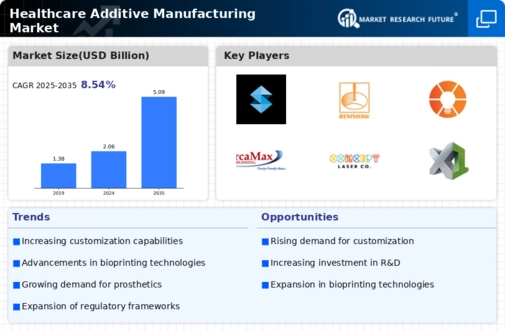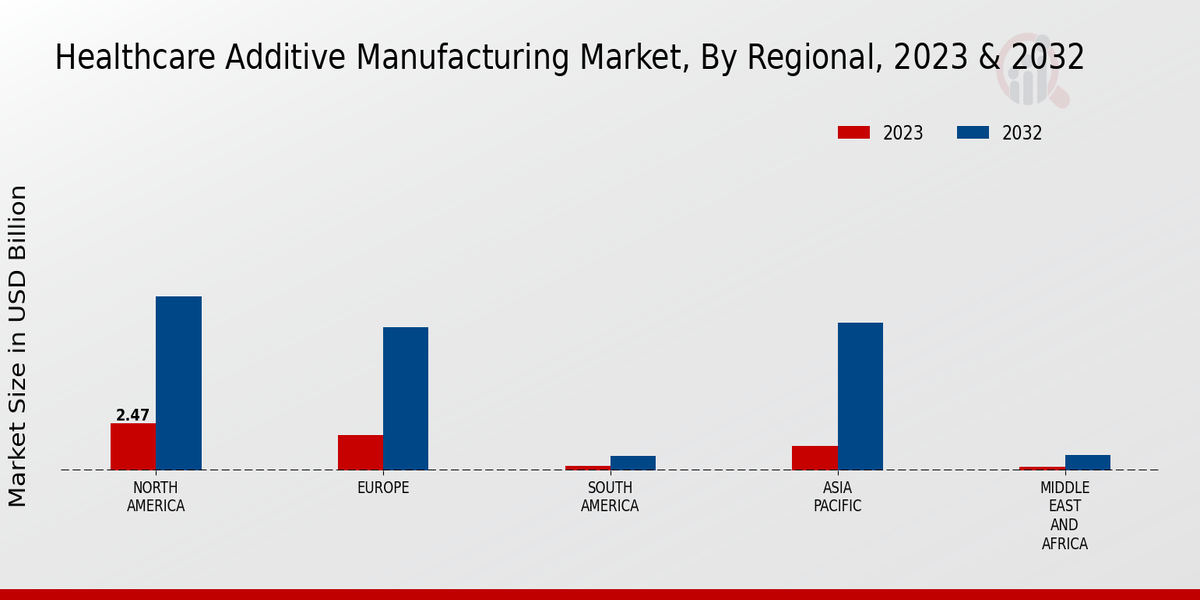Market Growth Projections
The Global Healthcare Additive Manufacturing Market Industry is poised for substantial growth, with projections indicating a market value of 2.06 USD Billion in 2024 and an anticipated increase to 5.09 USD Billion by 2035. This growth trajectory reflects a compound annual growth rate of 8.57% from 2025 to 2035. The expansion is driven by various factors, including technological advancements, increased investment in research and development, and the rising demand for personalized medicine. As the industry evolves, stakeholders are likely to explore new applications and innovations that will further enhance the market's potential.
Regulatory Support and Standardization
Regulatory support and the establishment of standards play a crucial role in the growth of the Global Healthcare Additive Manufacturing Market Industry. Governments are increasingly recognizing the importance of creating a regulatory framework that fosters innovation while ensuring patient safety. For example, the U.S. Food and Drug Administration has initiated guidelines for the approval of 3D-printed medical devices, which streamlines the process for manufacturers. This regulatory clarity encourages more companies to enter the market, thereby expanding the range of available products and services. As a result, the market is likely to witness accelerated growth in the coming years.
Rising Demand for Personalized Medicine
The Global Healthcare Additive Manufacturing Market Industry experiences a notable surge in demand for personalized medicine. This trend is largely driven by advancements in 3D printing technologies, which enable the production of customized implants and prosthetics tailored to individual patient anatomies. For instance, orthopedic implants can now be designed to fit the unique contours of a patient's bone structure, enhancing surgical outcomes. As the market is projected to reach 2.06 USD Billion in 2024, the emphasis on personalized healthcare solutions is likely to propel growth further, with expectations of reaching 5.09 USD Billion by 2035.
Technological Advancements in 3D Printing
Technological innovations in 3D printing are pivotal to the expansion of the Global Healthcare Additive Manufacturing Market Industry. The introduction of bioprinting and advanced materials has revolutionized the production of complex biological structures, such as tissues and organs. These advancements not only improve the precision of medical devices but also reduce production costs and time. For example, the use of bio-inks in 3D printing allows for the creation of living tissues that can be used for drug testing and regenerative medicine. This technological evolution is expected to contribute to a compound annual growth rate of 8.57% from 2025 to 2035.
Growing Aging Population and Chronic Diseases
The Global Healthcare Additive Manufacturing Market Industry is significantly influenced by the growing aging population and the prevalence of chronic diseases. As the global demographic shifts towards an older population, there is an increasing demand for medical devices and implants that cater to age-related health issues. Chronic diseases such as diabetes and cardiovascular conditions necessitate advanced treatment options, including customized solutions provided by additive manufacturing. This demographic trend is expected to drive market growth, as healthcare providers seek innovative ways to address the unique needs of aging patients.
Increased Investment in Research and Development
Investment in research and development within the Global Healthcare Additive Manufacturing Market Industry is on the rise, as stakeholders recognize the potential of additive manufacturing to transform healthcare delivery. Governments and private entities are allocating substantial funds to explore innovative applications of 3D printing in medical fields. For instance, initiatives aimed at developing 3D-printed organs for transplantation are gaining traction, with significant funding directed towards overcoming technical challenges. This influx of investment not only accelerates technological advancements but also fosters collaborations between academia and industry, thereby enhancing the overall growth trajectory of the market.











